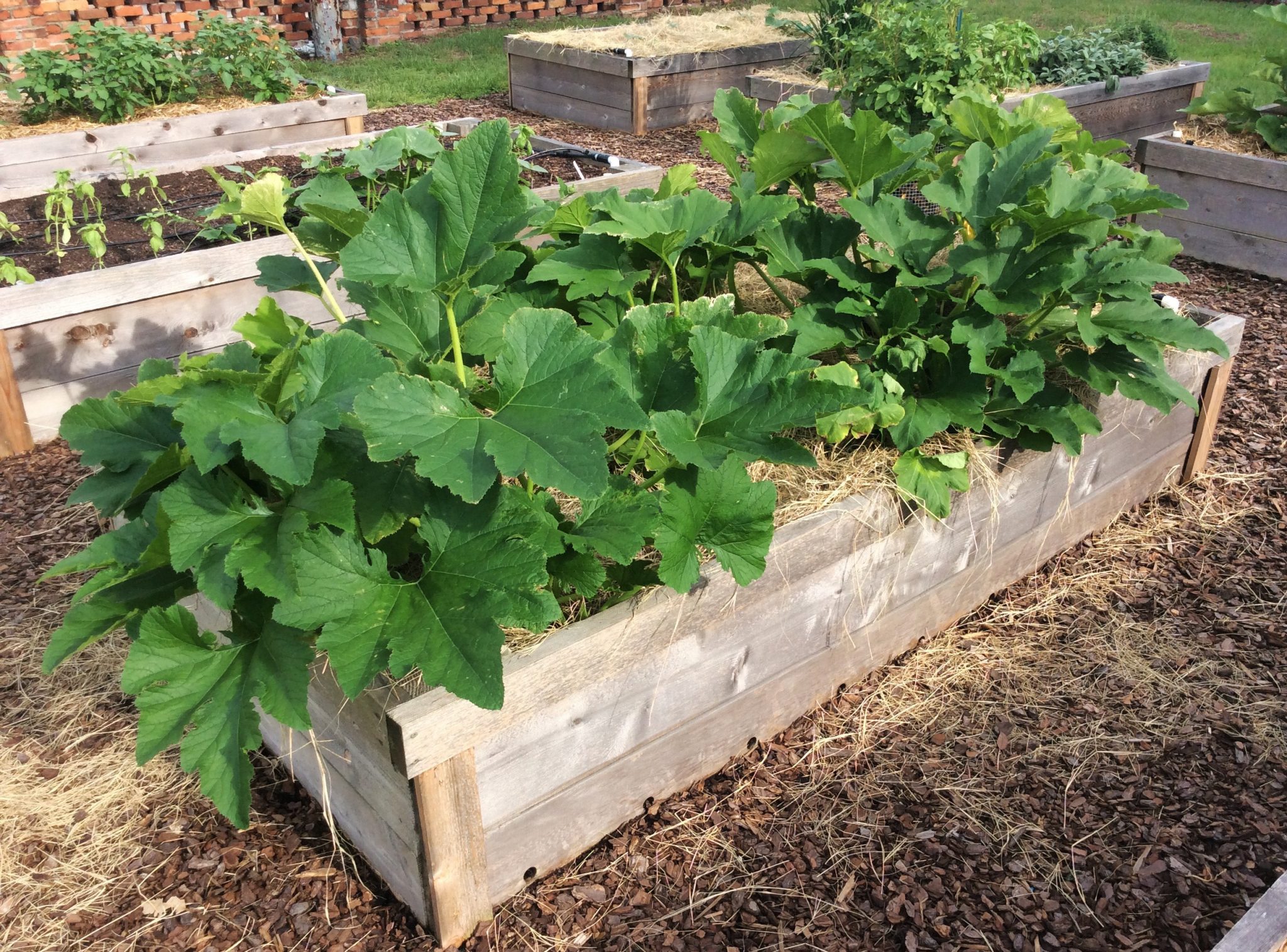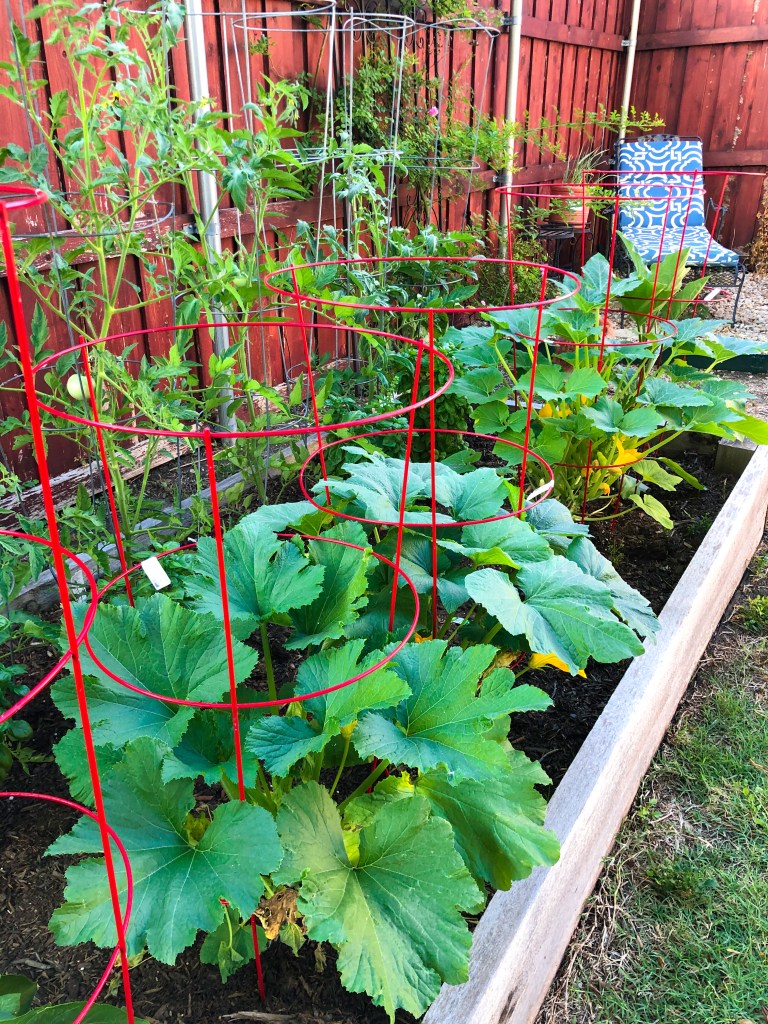To plant squash in a raised bed, prepare the bed by amending the soil. Then sow the seeds or transplant seedlings into the bed, spacing them properly and ensuring they have adequate sunlight and moisture.
Growing squash in a raised bed is an excellent option for gardeners who have limited space or poor soil conditions. Raised beds provide gardeners with greater control over the soil composition, drainage, and water retention. Additionally, they offer better protection against weeds and pests.
Whether you prefer summer squash varieties like zucchini and yellow crookneck or winter squash types such as butternut or acorn, the process of planting squash in a raised bed remains relatively similar. We will explore the step-by-step process of planting squash in a raised bed, from preparing the soil to ensuring optimal growing conditions. So, let’s get started and learn how to grow a bountiful squash harvest in your raised bed garden.

Credit: www.aces.edu
Factors To Consider When Selecting Squash Varieties
Factors to consider when choosing squash varieties include space requirements, growth habits, disease resistance, and harvest time. When selecting squash for a raised bed, it’s important to consider how much space each variety needs to grow properly. Some squash plants can spread out quite a bit, so make sure you have enough room.
Different varieties also have different growth habits, such as vining or bushy, which can affect how you manage and support them. Disease resistance is another crucial factor, as certain squash varieties are more susceptible to common diseases. Lastly, pay attention to the harvest time of each variety, taking into account how long it will take for the squash to mature and be ready for picking.
Consider these factors to ensure a successful squash harvest in your raised bed.
How to Plant Squash in a Raised Bed: 11 Easy Guides
Clearing And Cleaning The Bed
Cleaning the bed is the first step in preparing a raised bed for planting squash. Start by removing any weeds or debris that may be present. Next, loosen the soil to ensure it is well aerated and drains properly. This can be done using a garden fork or a tiller.
Once the soil is loose, it’s time to fertilize the bed. Choose a balanced organic fertilizer and apply it according to the instructions on the package. This will help provide the necessary nutrients for healthy squash growth. By following these steps, your raised bed will be ready for planting squash and you’ll be on your way to a successful harvest.
Creating A Suitable Planting Environment
To create a suitable planting environment for squash in a raised bed, it is essential to add compost or organic matter to enhance the soil quality. This helps to provide essential nutrients for the plants to thrive. Additionally, adjusting the soil ph is crucial to ensure optimal growth and productivity.
It is recommended to maintain a slightly acidic to neutral ph level, typically ranging from 6. 0 to 7. 0. This can be achieved by adding materials like elemental sulfur or lime, depending on the initial soil ph. Moreover, ensuring proper drainage is vital to prevent waterlogged soil, which can lead to root rot and other plant diseases.
Good drainage can be accomplished by incorporating organic matter into the soil and creating raised beds with adequate spacing between plants. By following these guidelines, you can create an ideal planting environment for squash in a raised bed.
Starting With Healthy Squash Seedlings
Starting with healthy squash seedlings is crucial for a successful harvest. Whether you choose to purchase seedlings or start from seeds, ensure that they are of good quality. When transplanting the seedlings into the raised bed, gently loosen the soil to allow the roots to establish easily.
Hardening off the seedlings before planting them permanently in the bed is essential. Gradually expose them to outdoor conditions, starting with a few hours of sunlight and gradually increasing the duration. This process helps the seedlings adapt and prevents transplant shock.
Water the plants regularly and ensure they receive enough sunlight. By following these steps, you can enjoy a bountiful harvest of delicious and healthy squash from your raised bed.
Proper Spacing And Placement
Squash plants require proper spacing and placement when planting in a raised bed. Determining the spacing requirements ensures that each plant has enough room to grow and thrive. Arranging the squash plants in the bed allows for efficient use of space while avoiding overcrowding.
This promotes healthy growth and prevents the spread of diseases. Additionally, it is important to ensure proper airflow around the plants. Good airflow helps prevent the development of mildew and other fungal diseases. Proper spacing, placement, and airflow are key factors in successful squash planting in a raised bed.
By following these guidelines, you can maximize your squash harvest and enjoy a bountiful crop.
Providing Support For Vine Varieties
When planting squash in a raised bed, it’s important to provide support for vine varieties. Choosing the right trellises or cages is crucial for the success of your plants. Training the vines to grow vertically helps maximize space and allows for better air circulation.
Additionally, it reduces the risk of diseases and pests. Install the trellis or cage before planting the squash and gently guide the vines as they grow. Regularly check for any signs of damage or overgrowth and prune accordingly. Proper support for vine varieties ensures strong and healthy plants, leading to a bountiful harvest.
So, consider investing in trellises or cages to keep your squash plants thriving in your raised bed garden.
Watering And Mulching
Planting squash in a raised bed requires proper watering and mulching. To establish a watering schedule, observe the soil moisture and adjust accordingly. Applying mulch will help conserve moisture and prevent weed growth. Consider using organic mulch such as straw, leaves, or wood chips.
Spread a layer of mulch around the base of the squash plants, avoiding direct contact with the stems. This will help maintain soil temperature and prevent evaporation. Remember to water deeply, ensuring that the root zone receives adequate moisture. Avoid overhead watering, as it can promote disease.
Monitor the moisture level regularly and adjust watering if needed, especially during dry periods. Mulching and watering are crucial for the healthy growth and productivity of squash plants in a raised bed.
Pest And Disease Prevention
One crucial aspect of planting squash in a raised bed is preventing pests and diseases. It is essential to monitor the plants regularly for any signs of infestation. Additionally, being able to identify common squash diseases can help with early detection and treatment.
Implementing preventative measures, such as using organic pest control methods and providing proper spacing between plants, can significantly reduce the risk of pest and disease damage. Maintaining cleanliness in the garden by removing any infected or diseased plants also plays a vital role in prevention.
By following these guidelines, you can ensure a healthy and thriving squash crop in your raised bed.
Maintaining And Caring For The Plants
Maintaining and caring for plants requires regular pruning and thinning to promote healthy growth. This involves carefully removing any dead or damaged leaves, as well as overcrowded or weak stems. Additionally, monitoring the fertilization needs of your squash plants is vital.
Providing them with the right nutrients at the right time helps ensure their optimal development. Regular monitoring is essential to identify and address any issues that may arise, such as pest infestations or diseases. By promptly troubleshooting and taking appropriate action, you can safeguard your squash plants and promote their overall health and productivity.
Remember, a well-maintained and cared-for raised bed will yield bountiful squash harvests throughout the growing season.
Indications Of Readiness For Harvest
The readiness for harvest of squash can be determined by observing its size and color. When the squash reaches the appropriate size, typically between 6-8 inches in diameter, and develops a deep, vibrant color, it is a good indication that it is ready to be harvested.
Additionally, the stem of the squash should be properly dried out before picking. This can be determined by gently pressing the stem with your finger. If it feels dry and slightly brittle, it is a sign that the squash is fully matured and ready to be harvested.
Properly assessing these signs will ensure that you harvest your squash at the right time for optimal flavor and texture.
Harvesting Techniques
Squash is a popular vegetable to grow in a raised bed, and knowing how to harvest it correctly is essential. When the squash is ready for harvesting, use a sharp knife or pruners to cut the stem cleanly from the plant.
Be sure to leave a small part of the stem attached to the squash to prevent rot. Handle the squash with care, as rough handling can cause bruising and damage. After harvesting, it is important to store the squash in a cool, dry place with good air circulation.
This will help to prolong its shelf life and maintain its flavor and quality. With these simple tips, you can enjoy a bountiful harvest of delicious squash from your raised bed garden.
Creative Ways To Cook And Enjoy Squash
Planting squash in a raised bed is a great way to ensure optimal growth and yield. Whether you prefer zucchini, butternut, or acorn squash, there are plenty of creative ways to cook and enjoy this versatile vegetable. From roasting and stuffing to spiralizing and grilling, the possibilities are endless when it comes to incorporating squash into your dishes.
Additionally, there are numerous delicious recipes that highlight the unique flavors and textures of squash. And if you find yourself with an abundance of squash, freezing or preserving it is a fantastic way to extend its shelf life and enjoy it throughout the year.
So, get your raised bed ready, explore new culinary adventures, and never let any squash go to waste.
Frequently Asked Questions For How To Plant Squash In A Raised Bed
Q: What Are The Benefits Of Planting Squash In A Raised Bed?
A: planting squash in a raised bed offers several benefits. It provides better drainage, increases soil temperature, and prevents weeds and pests from reaching the plants. The raised bed also allows easier access for maintenance and harvesting, making it a popular choice for growing squash.
Q: How Do I Prepare The Soil In A Raised Bed For Planting Squash?
A: to prepare the soil in a raised bed for planting squash, start by removing any weeds or grass. Then, loosen the soil and incorporate organic matter like compost or well-rotted manure. It’s also important to ensure proper drainage by adding coarse sand or vermiculite.
Finally, level the soil surface before planting.
Q: How Deep Should I Plant Squash Seeds In A Raised Bed?
A: when planting squash seeds in a raised bed, sow them at a depth of about 1-2 inches. This ensures that the seeds have enough moisture and nutrients to germinate properly. However, it’s always a good idea to check the specific planting instructions on the seed packet for the particular variety of squash you’re planting.
Conclusion
To summarize, planting squash in a raised bed is a smart gardening technique that offers numerous benefits. By creating a suitable environment for squash plants, you can maximize their growth and yield. Remember to choose the right variety of squash and prepare the soil adequately before planting.
Place your squash plants strategically, allowing enough space for them to spread and thrive. Regular watering, mulching, and pruning will promote healthy growth and prevent common issues. Additionally, incorporating companion plants and implementing organic pest control methods will further enhance your squash harvest.
By following these guidelines and practicing patience, you can enjoy a bountiful supply of delicious, homegrown squash. So, roll up your sleeves, gather your tools, and start planting squash in your raised bed for a rewarding and fruitful gardening experience.

